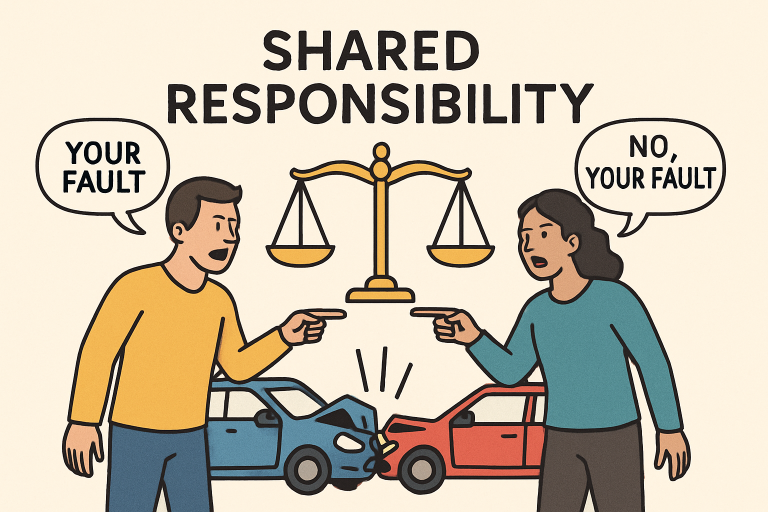Table of Contents
- Introduction
- What Is Comparative Negligence?
- Types of Comparative Negligence
- State-Specific Approaches
- Impact on Compensation
- Real-World Examples
- Navigating Personal Injury Claims
- Conclusion
When accidents upend daily life, determining who is responsible can be challenging and legally complex. The concept of comparative negligence addresses this complexity by allowing blame to be distributed among all parties involved in an incident, reflecting the real-world nuances of most accidents. For those considering legal action, understanding this framework—and the role of a skilled personal injury lawyer Dallas, Texas—is critical for pursuing fair compensation after an injury. Comparative negligence plays a crucial role in U.S. personal injury law, influencing the compensation an injured person may receive and their ability to recover damages. Knowledge of state-specific comparative negligence rules is crucial, as it significantly impacts case outcomes in instances of shared fault. This principle aims to ensure proportionality in justice regarding personal injury claims, making it crucial for both plaintiffs and defendants to stay informed about evolving laws and court decisions.
What Is Comparative Negligence?
Comparative negligence is a legal rule used to determine fault following an accident. Instead of making one party entirely liable, the doctrine acknowledges that multiple parties can contribute to an accident. Each party’s compensation is then adjusted based on their percentage of responsibility, promoting a more equitable distribution of liability. This approach stands in contrast to the older “contributory negligence” doctrine, which could bar recovery even if a plaintiff was only slightly at fault. Comparative negligence enables courts to allocate responsibility—and compensation—in a manner that more accurately reflects the circumstances of an incident.

Types of Comparative Negligence
- Pure Comparative Negligence: Under this system, plaintiffs can recover damages even if they are primarily at fault. For example, someone found 99% responsible can still receive 1% of the damages.
- Modified Comparative Negligence: This rule introduces a threshold—typically 50% or 51%. If the plaintiff’s share of fault exceeds this limit, they are unable to recover any damages. If the fault is at or below the threshold, compensation is reduced in proportion to the fault.
State-Specific Approaches
Each state tailors the comparative negligence doctrine to suit its policy objectives best. Some notable approaches include:
- Florida: Transitioned to a modified comparative negligence system in 2023, which prevents plaintiffs from recovering damages if they are more than 50% at fault. This significant change affects every new personal injury case in the state.
- California: Follows a pure comparative negligence model, meaning even extremely at-fault plaintiffs can recover partial damages. This system emerged from the major California Supreme Court case Li v. Yellow Cab Co.
- Maryland: Uses the contributory negligence rule, barring any recovery if the plaintiff is even slightly at fault, though ongoing debates could soon influence a shift to comparative negligence.
Impact on Compensation
The choice of negligence system directly changes the financial outcomes in personal injury cases. In pure comparative negligence, someone who is 30% at fault for a $100,000 accident could still recover $70,000. With a modified 50% system, that same individual is eligible for recovery unless their responsibility exceeds 50%. If the bar is crossed—even by a single percentage point—no damages can be collected. This fine line underscores why diligent evidence gathering—such as photographs, eyewitness statements, and official reports—is vital for determining an accurate apportionment of fault.
Real-World Examples
Consider a pedestrian who crosses a street outside the marked crosswalk and is struck by a speeding driver. In a pure comparative negligence state, the court may find both individuals partially at fault, and the damages awarded may be proportionate to their respective levels of fault. The pedestrian would still obtain a percentage of damages aligned to their level of responsibility. In contrast, a modified comparative negligence state could bar the pedestrian from recovering anything if found to be 51% or more at fault. Another scenario arises in multi-car collisions, where insurers and courts must parse through conflicting accounts to determine respective degrees of negligence. In such cases, legal consultation and detailed evidence are often the difference-makers.
Navigating Personal Injury Claims
The comparative negligence rule requires injured parties to establish the lowest plausible level of fault. Steps such as securing consistent documentation, obtaining medical reports, and seeking expert legal counsel can be decisive. An experienced attorney will know how to present facts, engage relevant witnesses, and use expert testimony to argue for fair compensation effectively.
Conclusion
Comparative negligence is central to modern personal injury law, ensuring responsibility is shared equitably in complex scenarios. Recognizing which system your state uses and how to approach a claim best can make all the difference after an accident. Preparedness, strong evidence, and an adept legal advocate empower injured individuals to pursue the justice and compensation they deserve.

